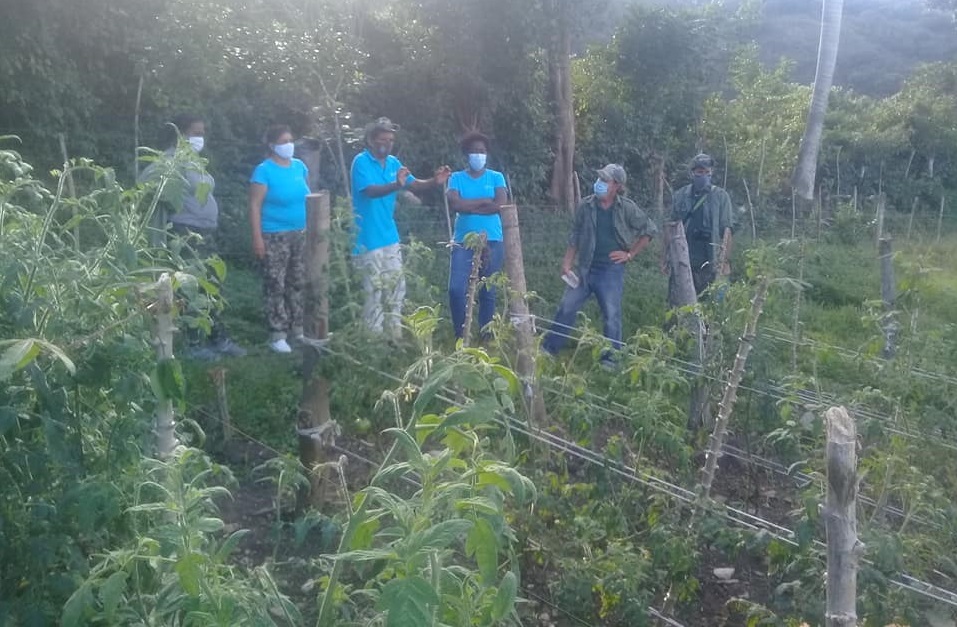
The first time that María del Carmen Olivera Isern, coordinator of the international project Connecting Landscapes in the province of Ciego de Ávila, was at the Rincón Los Hondones farm, in the Bamburanao mountain massif, she was suspicious when appraising a piece of land, apparently, barren and rocky.
Such was the impression that she did not hesitate to turn to her specialist in the municipality of Chambas: “Why did you bring me here, is this man crazy?” she said. Nevertheless, for some strange reason, she decided to grant a vote of confidence to that intellectual farmer. Three months later, she confirmed that her decision was the right one.
They soon appreciated the results and now she even dares to share her first impression with Osveldo and his wife Ana Elsy Guerra. She ends by expressing her pride at having discovered that couple of professionals who decided to bring their knowledge to the land to produce food and combine that vocation with that of pedagogues.
PEASANT TEACHERS OR VICE VERSA
She, an agricultural engineer, works as coordinator and professor of the Agronomy career at the Municipal University Center of Chambas. He, a graduate in Physics, teaches the subjects of Agro-ecology and Agro-meteorology at the university itself.
Together they conceived one of the six school farms with a landscape approach that currently exist in the country, where they promote agro-ecological and ecosystem-friendly practices to produce food in a sustainable way, and teaching and research activities are carried out.

The provincial coordinator of Connecting Landscapes stressed that positive results are recorded in the yields of different crops, despite the characteristics of the place and the adversities of the climate.
Economic and conservationist interests are combined in productions that guarantee family self-sufficiency and contribute to the consumption of nearby communities and health and educational institutions in the town of Chambas, so that they participate in social life, she stressed.
From that farm, integration between different institutions that develop science, technology and innovation in order to produce food is achieved. They are part of the Farmer to Farmer Movement, also in favor of beneficial practices for the environment and healthier crops.
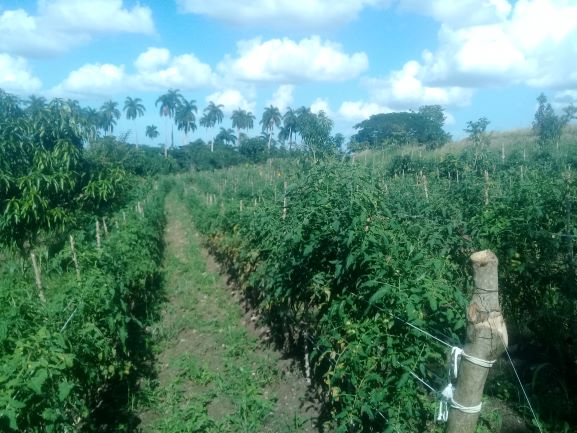
Mountain practices are socialized with the executors of the international Coastal Resilience project in the town of Punta Alegre, in the north of Ciego de Ávila, where food systems are expected to be consolidated by taking advantage of natural resources to reduce environmental pollution and address shortages of chemicals.
Connecting Landscapes is also linked to a world program that is carried out in the university of Ciego de Ávila for the production and management of efficient microorganisms, and to the institutions participating in the State Plan to confront climate change (Life Task) and the Sovereignty Program Food and Nutritional Education.
PRODUCTIONS WITH SCIENCE
In Los Hondones, research has been carried out related to the use of efficient microorganisms in papaya, tomato and tobacco crops, and in a soil conservation area, studies that contribute to the graduation theses of Agricultural Engineering students, Gómez Reina commented.
The use of microorganisms for agriculture is an easy-to-use technique, developed in the 1980s by the agricultural engineer Doctor Teruo Higa, professor of Horticulture at the University of the Ryukyus, in Okinawa, Japan. In the forests, around 80 species are estimated, from about 10 genera, belonging to four groups (photosynthetic bacteria, Actinomycetes, producers of lactic acid and yeasts), he explained.
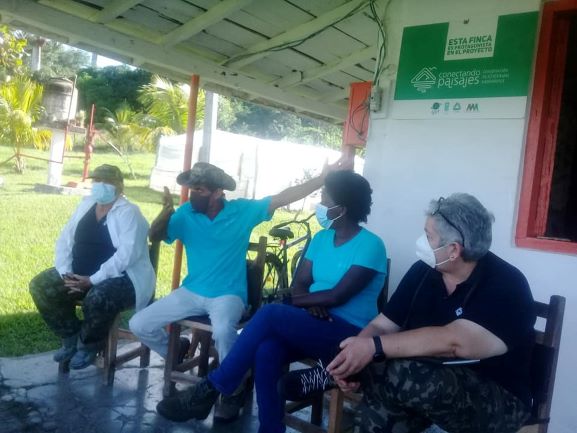
Osveldo stressed that the so-called mountain microorganisms decompose organic matter and increase the availability of soil nutrients, inhibit the growth and development of harmful species that inhabit the land, have hormonal effects that promote crop development, degrade substances toxic and improve the quality of the soil.
As other innovative procedures, the producer pointed out the planting in contours on contour lines to reduce the incidence of erosion due to climate change in the high areas of the farm and the eradication of the tendency to form gullies by creating dams with stones, he clarified.
Other methods are added to this such as polyculture and intercropping, the application of organic matter and harvest waste to the land, incorporation of repellent plants to dissociate pests and the development of evacuation ditches to prevent rainwater currents from damaging the soil.
They also use animal traction, soil conservation implements and live fences, in addition to diversifying crops and incorporating animal husbandry, he added.

Gómez Reina assures that for two years they have dispensed with the inputs provided by state entities because they use natural biopreparations, obtained from plants such as cardon and bitter broom, with repellent properties that control and inhibit the proliferation of pests.
These plants are combined and subjected to a fermentation process for six or seven days, as a result of which a biological medium is obtained that is effective in preventing and eliminating diseases in plantations. In addition, they use lime hydrate to eradicate fungal infections.
In this way, it has been possible to eliminate the chemical inputs that contribute to the contaminant load of the agroecosystem on the farm, erosion is reduced (35 cubic meters of soil are retained) and a biodiversity of timber and fruit trees is established by achieving a welcoming and the rescue of tropical fruits (soursop, custard apple, sugar apple, Creole lemon, pomegranate, tamarind, cashew).

The determination of Osveldo and his wife to be self-sufficient in rice, in a place where water is scarce (there is not even a stream nearby) constitutes another of the challenges assumed in that hill. It was not easy, but it was not impossible either.
They developed the rainfed rice variety after making careful observations of the climate, properly selecting the time for its harvest and implementing procedures such as dumping crop residues on the ground to ensure greater moisture retention.
Speaking to Ciego de Ávila TV, Milka Martínez Alemán, a fifth-year Agronomy student at the Chambas Municipal University Center, was surprised at the cultivation of this grain because she knew that rice could be grown in dry land in a mountainous area.
She also recognized the benefits of rescuing this variety for the producers of the Bamburanao mountain range, who are unable to grow other varieties due to irrigation requirements.
• See the report Los Hondones school farm diversifies its agroecological productions
Lázara Sotolongo Molina, national director of Connecting Landscapes, in a recent visit to Rincón Los Hondones, considered relevant the link of its owners to the teaching tasks in Primary, Technical-Professional and Higher education, in particular to the training of 104 agricultural engineers, those who carry out their work practices there, while five carry out research to complete their studies.
COMMITMENTS IN THE MOUNTAINS
The Rincón Los Hondones Farm School with a Landscape Approach also made headlines, almost at the end of 2021, when one of the daughters of Osveldo and Ana Elsy rescued an old peasant tradition. At the foot of those mountains, Dayana Libet Gómez Guerra and José Raúl Rojas Vera got married in a peculiar ceremony.

Attached to their peasant roots, they swore eternal love to each other at the foot of the mountains that rise, with all their greenery, between the municipalities of Chambas and Florencia, under a clear blue sky that accentuated the peace and tranquility; right in the space where various crops are discovered, also resulting from their efforts.
Medicine does not separate them from their vocation for agricultural work, therefore, whenever the demanding profession allows them, they participate in planting, treating and harvesting crops. The work in the field ennobles them, reaffirms humility and demonstrates their ability to develop in different environments, the newlyweds said.
• Read the chronicle Promises at the foot of the hill (+Photos)
Connecting Landscapes reached that remote space of the geography of Chamba to dignify that family of professionals linked to food production, by improving their living and working conditions with the delivery of tools, clothing, household items and teaching aids.
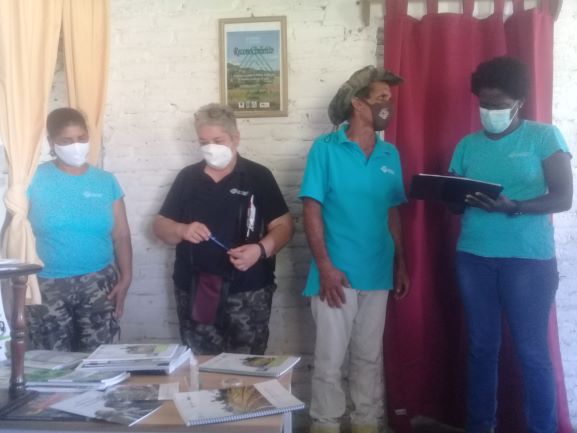
Beyond the material contributions, Osveldo and his people recognize the accompaniment of the authorities and educational and scientific organizations and institutions that intervene in food production with the development of science, technology and innovation.
In this support, they discover new motivations to continue in the effort to produce food in a sustainable way and progressively increase harvests to contribute to food sovereignty, the local self-sufficiency program.
Minimizing the cost of production is another purpose for positioning itself in the market with competitive and fair prices, below those imposed by inflation, a phenomenon whose solution will depend on a greater availability of offers.
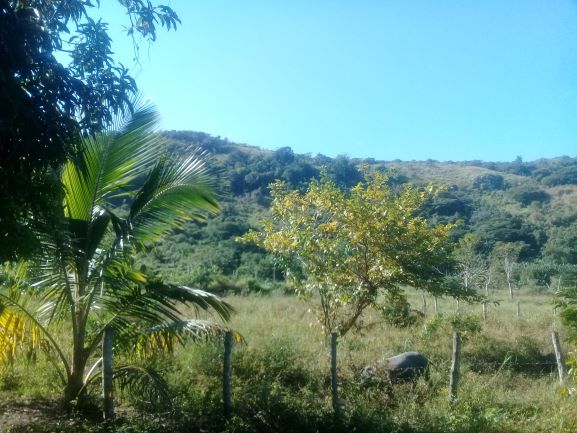
Osveldo continues to be the farmer with a fast-paced speech and temperament, and no one confuses his impetuousness (that of his family) with madness or reverie, since he has shown that he has his feet firmly on the ground. Nothing will stop him from turning his 3.21-hectare farm into a training center for the Cuban peasantry and a space to develop nature and scientific tourism.·
He longs to turn his homeland into the venue for international events on Agroecology, a science that is not an alternative, but a path to the survival of the human species and materializes the ideas expressed by Fidel at the United Nations Conference on Environment and Development, held in Rio de Janeiro, in the year 1992.·
• See a fragment of Fidel's speech at the Earth Summit, Rio de Janeiro, 1992




